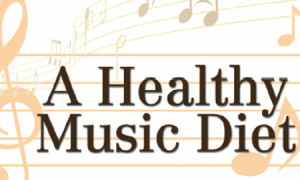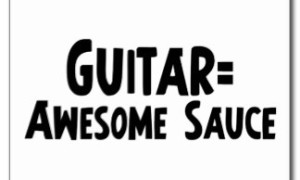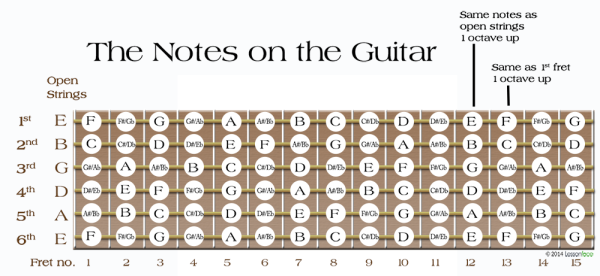The 1st time it’s a mistake, the 2nd time it’s jazz
“The 1st time it’s a mistake, the 2nd time it’s jazz” is a saying that goes around among musicians, mostly among soloists. What’s this about, and why is it so important?
As a musician, I constantly improvise. As a tutor, I constantly showcase how to improvise. Why? It all boils down to one thing – approaching fire with fire! In other words, giving students the confidence that the sooner they walk the fire (i.e. start to solo), the sooner the fire won’t burn anymore (everything becomes easier once you try it).
A point I love during lessons is that once I teach a scale, I immediately give students a backing track and ask them to start playing the notes not in order, to be free, to play anything whether it makes sense or not. Both student & I know that they need to go back home and practise that scale in alternate/economy picking vs a metronome to brush it up both visually and rhythmically, however we ignore that point, we think less and get on with it! The point here is to improvise (= singing with your instrument) and as everyone has sung before in their life (shower singing counts!), it’s by nature that they find their way. The subconscious is a big boy, we all know more than we think we do, so just play and it works sooner rather than later. Make no illusions, it will start as crap, but the more you do it the ratio of crap:gold will soon go from 9:1 to 0:10.
Point here is not how to start soloing, but for any of you that have been soloing for a while who would like to know what happens when for some reason they hit a ‘wrong’ note, a note that does not harmonically fit with the backing chordal accompaniment. So back to our idiom – the 2nd time it’s jazz! What happens then?
Repeat the ‘wrong’ note! And many times (at least 5-6 as the pic says). There’s a way how to of course, so keep reading…………
In a band, there are 3 ways how to improvise
1. the simplest way – you know the chords being played by the rhythm section (as a band you rehearsed the songs and probably also know the other guitarist’s notes, if not also the bassist’s, + you know the drummer’s patterns, when the vocalist comes in & what note, and more or less the keyboard notes too). So there you go – you have worked already what scale to use, and off you go!
2. a still simple way – let us say you have not rehearsed, but are jamming for the 1st time live with new musicians. They’ve been so great to hand you the song’s chord chart, so although you won’t know all other musicians’ parts, the chart more or less indicates what they may play. Enough info for you to choose the scale to solo with.
3. the more advanced musical way (not necessarily a hard way) that occurs when you jam with musicians live for the 1st time and they DO NOT give you a chord chart/ state the key – you are simply out there in the fire, and you gotta deal with it! With experience this isn’t difficult, so here’s how to build that!
You basically go on stage, keep your guitar volume down, and start hearing others’ chords to get the gist of it while playing some notes (just as you murmur before singing)! Then you put the volume up and continue listening to those chords on the spot, and this way you will solo using right notes without the need of knowing the chord harmonies.
But one might argue if they should be listening out to all intervals within a chord (as in aural tests in exams) to thus decide which notes within the scale to use. Which becomes too much work at every bar and takes out the fun and fire out of soloing!
Absolutely not! In a jam scenario, you just play and when you strike a note out of the chord (the ‘wrong’ note), you just move a semitone up/down. One does not need to know why it works (if you do, check out my ear training & theory course Know It Hear It!), but it works. As when you do, you are giving an illusion to the listeners of changing key. So to ensure that illusion strikes home effectively, just repeat that wrong note a couple of more times and then return back to the ‘right’ notes (not necessarily in order, but you could go to a ‘right’ note and return to the ‘wrong’ one some more times – the possibilities are endless).
Believe me, that when you manage to overcome this fear, that fire does not burn as you know how to walk it, it’s now the sweet fire of musical passion! For all who need to see to believe, we would not have Surrealism nowadays (and with it all those amazing out-worldly artworks on some vinyls you own) if Dali had not started seeing things differently than the ‘right’ rules of the time!
So, to recap, how to deal with wrong notes when they happen?
That could happen at a gig when a couple of hot women dance dirty a few feet away from you (or any other reason anyway) not ? You can loose track of which chord you on, the tempo, the key, … Naughty boy! When that happens, you have not been paying attention to one, two, or all of these:
- What are you playing?
- What is everyone else playing?
- How is what you are playing fitting in with what everyone else is?
This listening list includes the notes you’re choosing, the phrasing you’re choosing and how loudly you’re playing.
So if at any time you notice the band is getting shaky, go through this list to ensure it’s not you, and if not identify who it is and do what is possible to tighten up the band. Maybe playing the same wrong notes that the other band member is playing? After all this is what makes live music so beautiful – that it sometimes differs from the recorded songs!
Music, and in particular, improvisation is a listening art! So remember to always listen with your ears not your eyes. Because those hot women can distract your eyes but not your ears 🙂
Suggested related reading – malcolmcallus.com/fingerboard/
For vidz accompanying similar articles, please subscribe to Cool Gool’s Youtube
For lessons, please book at this link.)
www.malcolmcallus.com
Modern approaches to guitar, bass, ukulele & music theory tuition







 For a moment, imagine one runs a worldwide take-away food franchise. Was it a love for fast-food that made one start? Probably the answer has less to do with burgers & chips than with the opportunity of a fruitful long-term business. Which makes one observe that while musicians have way progressed from just playing their instruments well to learning more about backline, accessories & sound (from choice of strings, electronics, effects & amps to producing, sound engineering & mixing), some still do not recognize the extent it would benefit them if they put their hands on actually promoting their name.
For a moment, imagine one runs a worldwide take-away food franchise. Was it a love for fast-food that made one start? Probably the answer has less to do with burgers & chips than with the opportunity of a fruitful long-term business. Which makes one observe that while musicians have way progressed from just playing their instruments well to learning more about backline, accessories & sound (from choice of strings, electronics, effects & amps to producing, sound engineering & mixing), some still do not recognize the extent it would benefit them if they put their hands on actually promoting their name.
